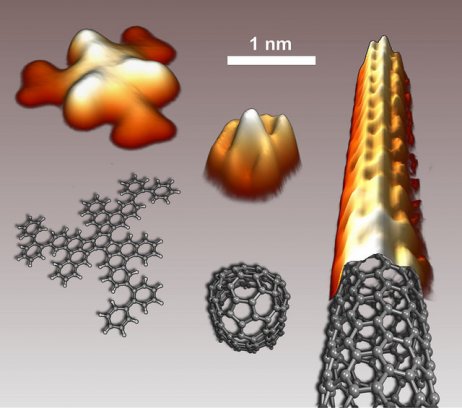
Strong aluminium composite with carbon nanotubes
Carbon nanotubes could help create next-generation electronic and electro-optical components that are smaller than ever before, achieving faster switching times.

12th August 2014
Innovation in Textiles
|
Duebendorf
Researchers at Empa and the Max Planck Institute for Solid State Research have succeeded in growing single-wall carbon nanotubes (CNT) with a single predefined structure, and hence with identical electronic properties.
In the latest issue of the journal Nature researchers have explained that the CNTs assembled themselves as it were, out of tailor-made organic precursor molecules on a platinum surface. According to scientists, in future, CNTs of this kind may be used in ultra-sensitive light detectors and ultra-small transistors.
For 20 years, carbon nanotubes (CNTs) have been the subject of intensive fundamental as well as applied research. With their extraordinary mechanical, thermal and electronic properties, these tiny tubes with their graphitic honeycomb lattice have become the paragon of nanomaterials.
They could help to create next-generation electronic and electro-optical components that are smaller than ever before, and thus to achieve even faster switching times.
With a diameter of roughly one nanometre, single-wall CNTs (or SWCNTs) need to be considered as quantum structures. The slightest structural changes, such as differences in diameter or in the alignment of the atomic lattice, may result in dramatic changes to the electronic properties: one SWCNT may be metallic, whilst another one with a slightly different structure is a semiconductor.
As a result, there is a great deal of interest in reliable methods of making SWCNTs as structurally uniform as possible. According to researchers from Empa, corresponding synthesis concepts were formulated about 15 years ago. However, it is only now that surface physicists at Empa and chemists at the Max Planck Institute have successfully implemented one of these ideas in the laboratory.
For some time, the Empa team working under the direction of Roman Fasel, Head of the nanotech@surfaces Laboratory at Empa and Professor of Chemistry and Biochemistry at the University of Berne, has been investigating the subject of how molecules can be transformed or joined together to form complex nanostructures on a surface.
“The great challenge was to find the suitable starting molecule that would also actually 'germinate' on a flat surface to form the correct seed,” explained Fasel. Finally, their colleagues at the Max Planck Institute in Stuttgart successfully synthesised the suitable starting molecule, a hydrocarbon with no fewer than 150 atoms.
In the first step, in a manner reminiscent of origami, the flat starting molecule must be transformed into a three-dimensional object, the germling. This takes place on a hot platinum surface by means of a catalytic reaction in which hydrogen atoms are split off and new carbon-carbon bonds are formed at very specific locations.

The germ – a small, dome-like entity with an open edge that sits on the platinum surface – is folded out of the flat molecule. This end cap forms the lid of the growing SWCNT. In a second chemical process, further carbon atoms are attached, which originate from the catalytic decomposition of ethylene (C2H4) on the platinum surface.
They position themselves on the open edge between the platinum surface and the end cap and raise the cap higher and higher; the nanotube grows slowly upwards. Further investigations using the new scanning helium ion microscope (SHIM) at Empa show that the resulting SWCNTs reach lengths in excess of 300 nanometres.
The researchers have proved that by using made-to-measure molecular germs, it is possible to clearly predefine the growth (and thus the structure) of long SWCNTs.
As their next step, Fasel and his colleagues intend to gain an even better understanding of the way in which SWCNTs populate a surface.

Business intelligence for the fibre, textiles and apparel industries: technologies, innovations, markets, investments, trade policy, sourcing, strategy...
Find out more